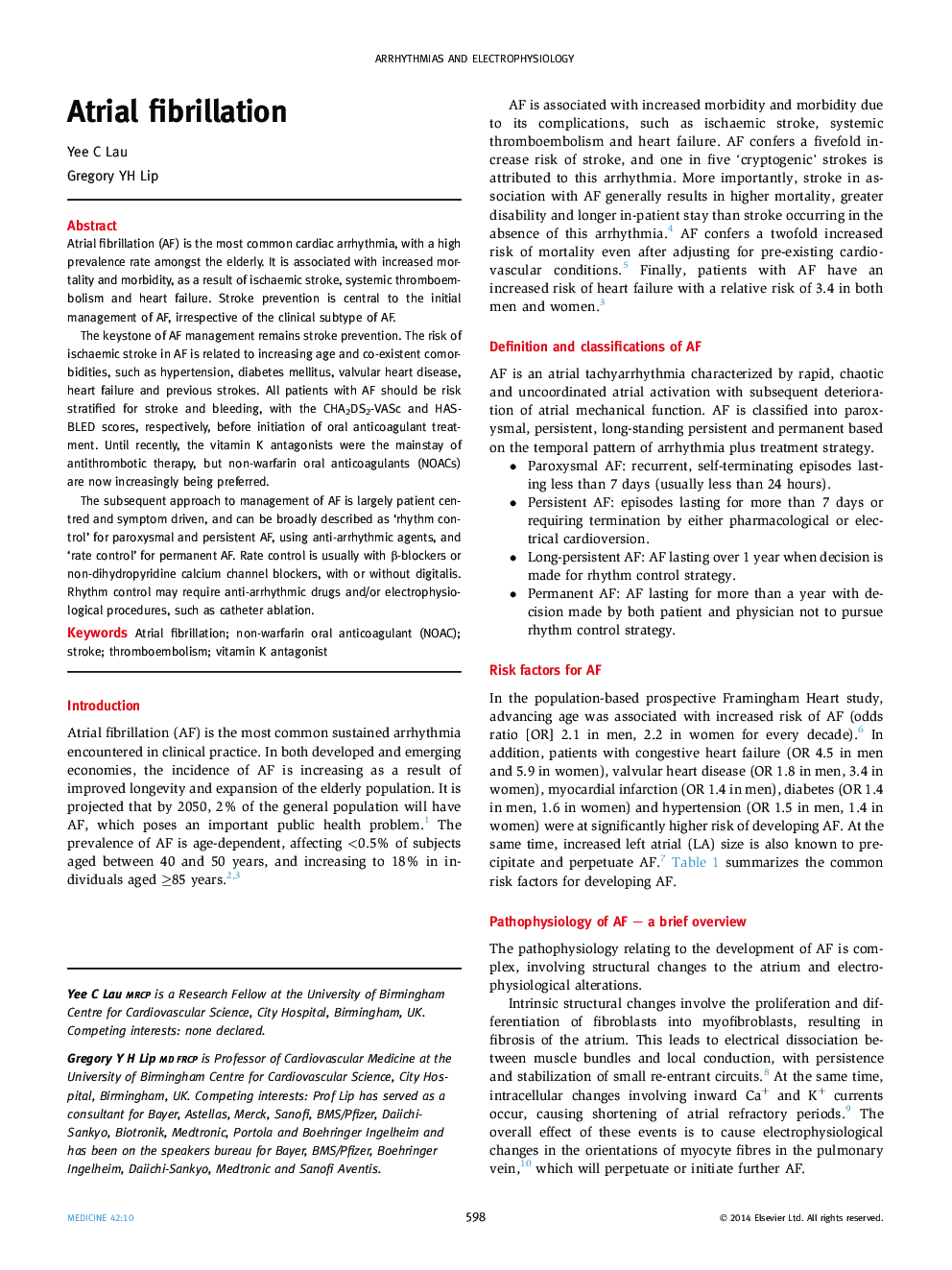| کد مقاله | کد نشریه | سال انتشار | مقاله انگلیسی | نسخه تمام متن |
|---|---|---|---|---|
| 3804723 | 1245097 | 2014 | 6 صفحه PDF | دانلود رایگان |
Atrial fibrillation (AF) is the most common cardiac arrhythmia, with a high prevalence rate amongst the elderly. It is associated with increased mortality and morbidity, as a result of ischaemic stroke, systemic thromboembolism and heart failure. Stroke prevention is central to the initial management of AF, irrespective of the clinical subtype of AF.The keystone of AF management remains stroke prevention. The risk of ischaemic stroke in AF is related to increasing age and co-existent comorbidities, such as hypertension, diabetes mellitus, valvular heart disease, heart failure and previous strokes. All patients with AF should be risk stratified for stroke and bleeding, with the CHA2DS2-VASc and HAS-BLED scores, respectively, before initiation of oral anticoagulant treatment. Until recently, the vitamin K antagonists were the mainstay of antithrombotic therapy, but non-warfarin oral anticoagulants (NOACs) are now increasingly being preferred.The subsequent approach to management of AF is largely patient centred and symptom driven, and can be broadly described as ‘rhythm control’ for paroxysmal and persistent AF, using anti-arrhythmic agents, and ‘rate control’ for permanent AF. Rate control is usually with β-blockers or non-dihydropyridine calcium channel blockers, with or without digitalis. Rhythm control may require anti-arrhythmic drugs and/or electrophysiological procedures, such as catheter ablation.
Journal: Medicine - Volume 42, Issue 10, October 2014, Pages 598–603
